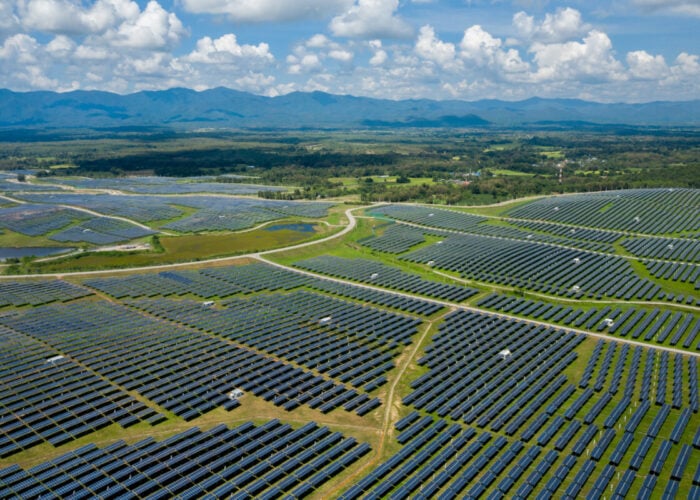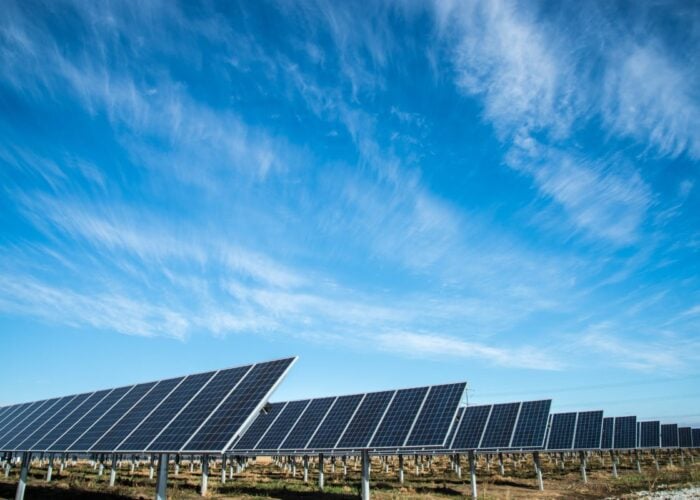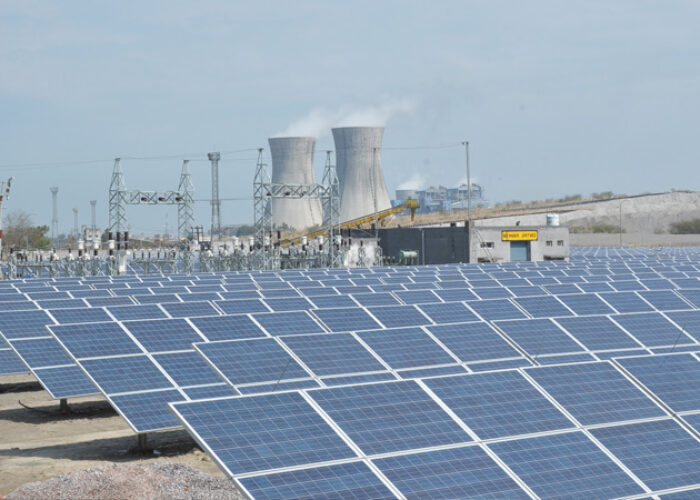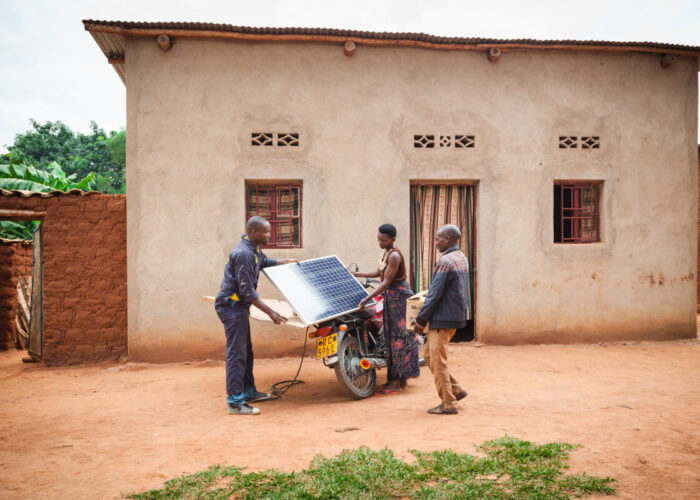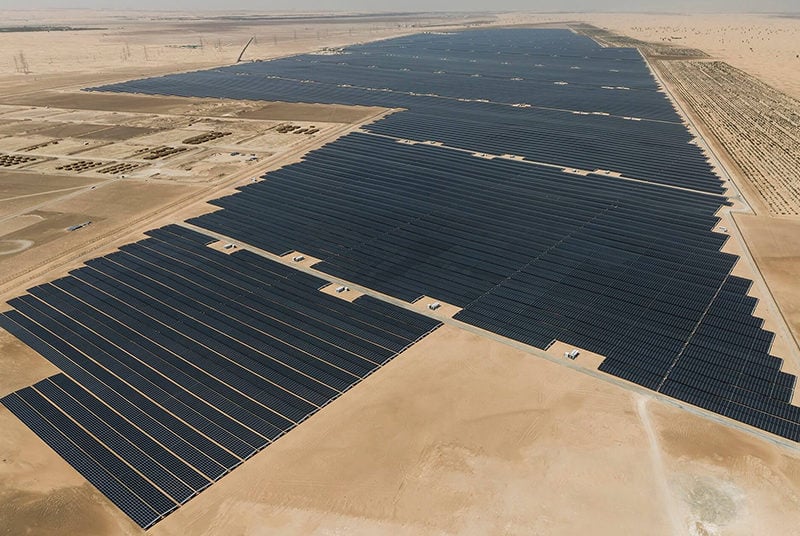
The COP28 Presidency, the International Renewable Energy Agency (IRENA) and the Global Renewables Alliance (GRA) have published a report into the world’s clean energy transition, calling for a tripling of global renewable installations by 2030, and an expansion of global solar capacity to 5.4TW by the end of the decade.
The groups published the report, ‘Tripling Renewable Power and Doubling Energy Efficiency by 2030’, today, as a precursor to the COP28 summit, to be held in Abu Dhabi between November and December. The report suggests that solar PV will have to account for more of the world’s installed renewable capacity than any other source, accounting for close to half of the 11TW installed by the end of the decade, if global warming is to be limited to 1.5 degrees Celsius.
Unlock unlimited access for 12 whole months of distinctive global analysis
Photovoltaics International is now included.
- Regular insight and analysis of the industry’s biggest developments
- In-depth interviews with the industry’s leading figures
- Unlimited digital access to the PV Tech Power journal catalogue
- Unlimited digital access to the Photovoltaics International journal catalogue
- Access to more than 1,000 technical papers
- Discounts on Solar Media’s portfolio of events, in-person and virtual
This echoes a similar sentiment put forward by the International Energy Agency (IEA) in a separate report published last week, which forecast solar PV to account for more than half of the world’s new power capacity installations over the next decade, and the agreement of the IEA with IRENA and the GRA will be encouraging for the global solar sector.
Significant solar potential
The GRA and IRENA report forecasts global solar capacity to grow from 1.1TW in 2022 to 5.4TW by the end of the decade, which would see solar account for the largest percentage of all renewable power sources, ahead of the 3TW of onshore wind capacity. The report also expects global renewables to account for 77% of the world’s energy mix by 2030, meaning that solar power will play a significant role in both the renewables mix, and the broader energy mix.
The report also notes that, while the majority of this total capacity is expected to be installed within G20 countries, a group of some of the world’s the wealthiest countries including China and the US, the rest of the world is expected to add around 900GW of new capacity by the end of the decade.
This work is already underway, through investments such as the massive 2.4GW Mohammed bin Rashid Al Maktoum solar park in the UAE, and Masdar’s plans to install 1GW of new renewables capacity in Azerbaijan, and demonstrate the potential for the clean energy transition to alter the balance of power in the global energy industry.
“We must now focus on building the necessary infrastructure and investing at scale in grids to accommodate a growing share of renewable energy; establish policy and regulatory architecture that can facilitate targeted public and private sector investments in the energy transition; and strategically realign institutional capacities to help ensure skills and capabilities match the energy system of the future,” wrote IRENA director-general Francesco La Camera in his foreword to the report.
However, meeting these solar targets will require the greatest investment, according to the report, which expects the world to invest US$2.9 billion into the solar PV sector over the coming decade. This will account for more than one-quarter of the US$10.4 billion that needs to be invested into new renewable power capacity, and around one-tenth of the US$29.5 billion that will need to be invested into grid infrastructure and energy efficiency improvements if the world is to meet these targets.
Financial incentives
Encouragingly for the solar sector, however, the levelised cost of electricity (LCOE) for solar power has fallen by a greater margin than any other form of renewable energy. In 2010, solar LCOE was 710% higher than the lowest-cost fossil fuel, but by 2022, this fell to be 29% lower than the lowest-cost fossil fuel.
This fall of 739 percentage points, shown in the graph below, is greater than the 520-point fall in concentrated solar power, the 241-point fall in offshore wind and the 147-point fall in onshore wind. Indeed, only onshore wind has a lower LCOE relative to the lowest-cost fossil fuel than solar.
This trend is expected to continue, with consultancy firm DNV expecting solar LCOE to fall by 48.8% by 2050, raising the potential for significantly more investment in the solar sector.
The IRENA and GRA report also notes that more financial support for renewable projects may be necessary, to provide enough incentives for companies to scale up investments in solar power. The document highlights groups such as the Climate Bonds Initiative, and programmes such as the Just Energy Transition Partnerships, as integral to encouraging the kind of continued investment necessary to sustain developments in the solar sector.
This is particularly significant for the solar sector, which continues to be dominated by private investment. A report published by IRENA in June found that, in 2020, 83% of investments into solar PV came from private finance, a much higher percentage than in other forms of renewable power. The fact that solar power is reliant on private backing means that, in order to continue to attract investment, solar projects will need to be financially lucrative investment opportunities for private backers.
“Global leaders must commit to these targets at COP28,” wrote GRA CEO Bruce Douglas in the report. “However, progress towards 2030 goals cannot be taken for granted. Policy makers must work hand-in-hand with industry and civil society to urgently implement the enabling actions in this report, centred on: infrastructure and system operation; policy and regulation; and supply chains, skills and capacities.”



